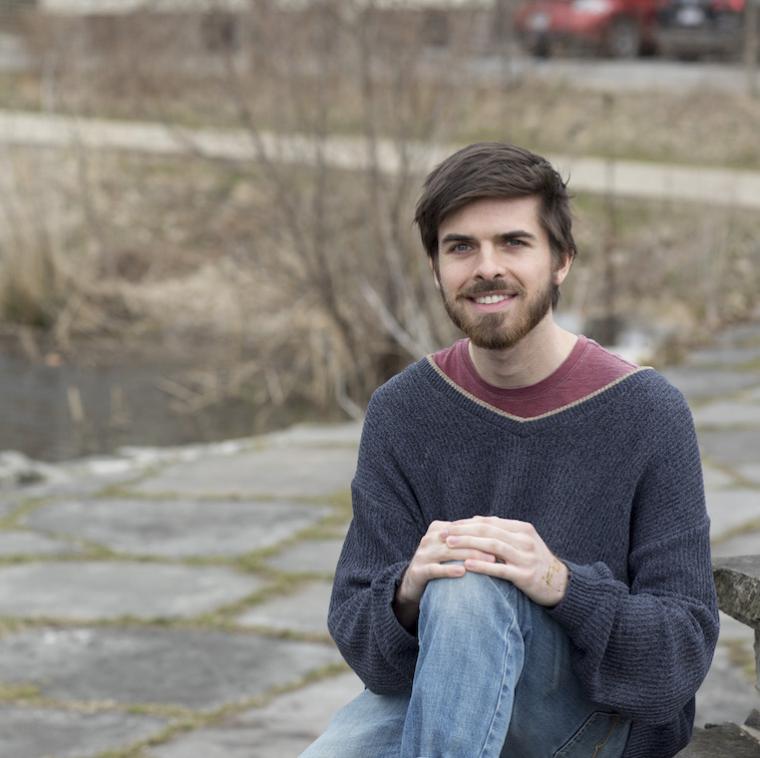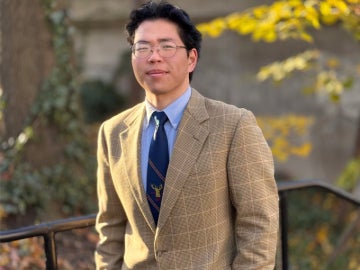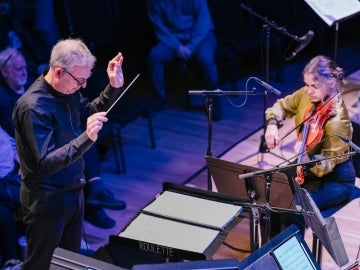CJ Blair Wins 2018 Watson Fellowship
April 18, 2018
Amanda Nagy

CJ Blair is a recipient of the 2018 Watson Fellowship.
Photo credit: Jennifer Manna
CJ Blair’s dream of becoming a conservation biologist will be supported in a bigger way than he ever imagined: a year of traveling across the world learning about threatened species and their impact on surrounding communities, funded by a 2018 Watson Fellowship.
“For me, the most exciting thing about conservation is that it requires you to reach people from a range of backgrounds to show them the importance of major issues like habitat loss and species extinction,” says Blair, a fourth-year biology major with minors in geology and creative writing. “People often see the scientific community as being disconnected from the world around it, but I’m interested in seeing how conservation research can actually stem from the needs and desires that people have for their environment. My Watson year will allow me to document that human component of conservation and let me see for myself how I can get involved with this global effort to protect threatened species.”
The Thomas J. Watson Fellowship is a one-year grant for purposeful, independent exploration outside the United States, awarded to graduating seniors nominated by one of 40 partner colleges. Fellows conceive original projects, deciding where to go, who to meet, and when to change course. They do not affiliate with academic institutions and may not hold formal employment. The fellowship provides a one-year stipend of $30,000.
Blair will spend the first two months of his journey in Greenland studying the conservation of caribou. Caribou hunting is such a vital part of Greenlandic culture that there has been a recent push to add it to the UNESCO list of practices essential to a people’s cultural heritage, he explains. However, climate change and urban development have caused major declines in many caribou herds, presenting a major threat to this way of life.
He will be based in the capital, Nuuk, working with the Greenland Institute of Natural Resources, which will allow him to accompany some of the Greenlandic Inuit on caribou hunts to understand the animal’s importance in their lives and how they are responding to their decline.
In the fall, he will move to the United Kingdom to study the iconic murmurations of European starlings.
“For all the grandeur of the flocks, it can be easy to forget that starlings in the U.K. have declined more than 80 percent in the last quarter century,” Blair says. “By investigating the starlings, I will learn how the complex perception of a species—as a garden pest by some and a wonder by others—influences support for its protection.”
At the beginning of winter, Blair will travel to Japan to study the red-crowned crane, which is depicted in wedding kimonos, indigenous dance, and the iconic paper cranes.
“Despite these frequent depictions, there is only one population remaining in Japan,” he says. “Public awareness campaigns have helped them rebound, but constant monitoring will be essential as agricultural development threatens their habitat.”
He will work with Nate Renner, an ethnomusicologist who studies the indigenous Ainu people, to arrange meetings with the Ainu near Kushiro National Wetlands, where the sole crane population resides. “I want to speak with the Ainu about the importance of the crane to their culture and with biologists in the park about current efforts to conserve the cranes.”
He will spend the later part of winter in Nepal, which is home to one of the world’s most successful wildlife conservation programs dedicated to the protection of the one-horned rhino. He plans to stay in a hostel outside of Chitwan National Park, an international tourist destination and home to many of Nepal’s rhinos, following the biologists who study the rhinos and learning about the work they do to protect them.
Next, will travel to Puerto Rico to learn about conservation of the coqui frog, which is facing extinction from chytrid fungus, a fungal outbreak killing amphibians faster than any other group of vertebrates.
He will work and travel alongside Patricia Burrowes, a biologist who specializes in coquis, and visit schools, art festivals, and community centers where he can find depictions of the coqui and talk to people about its importance to their Puerto Rican identity.
“A famous expression in Puerto Rico is ‘Yo soy de aqui como el coqui,’ or ‘I’m as Puerto Rican as a coqui.’ I want to learn how the complicated political status of Puerto Rico as a territory affects its ability to conserve wildlife, especially in the aftermath of declared bankruptcy and the devastation from Hurricane Maria.”
His project will end in Tanzania, known for the great migration of wildebeests through the Serengeti. Environmental degradation poses a serious threat to the migration, and the loss of wildebeests parallels the infrastructural development aimed at reducing Tanzania’s poverty, with new towns and farms disrupting crucial migratory routes. Blair will travel with conservation groups based just outside the Serengeti, including the Ngorongoro Conservation Area Authority and the Tanzania Wildlife Research Institute, to learn about their wide range of initiatives from research to public outreach.
Throughout his travels, Blair plans to write about his personal responses to wildlife across a variety of genres.
“The Oberlin community gave credence to my belief that there’s an essential link between science and the humanities, and that I was right to study both of them,” he says. “I’ve been able hone my writing skills through fiction and poetry, coordinate statewide anti-fracking campaigns, complete a thesis on forest conservation, and teach a class about the biology and cultural significance of toads. Instead of just learning about links between science and art, I have had the chance to draw those connections myself with the full support of my peers.”
A native of Lexington, Kentucky, Blair is a columnist for the The Oberlin Review, a member of Students for Energy Justice, a quantitative skills tutor, and a past intern in the Office of Environmental Sustainability. After his Watson year, he intends to pursue a PhD in conservation.
You may also like…
Leo Hidy ’23 Earns 2026 Marshall Scholarship
Leo Hidy ’23, a comparative American studies major who also studied business and economics while at Oberlin, has received a 2026 Marshall Scholarship that will fund two years of graduate study in the UK.
Oberlin’s Tim Weiss Wins 2025 Ditson Conductor’s Award
Prestigious honor celebrates contributions to American music; longtime professor joins elite company.
Paris Mercurio ’23 Earns Fulbright to Romania
The Shansi Fellow and creative writing major will be teaching English.


